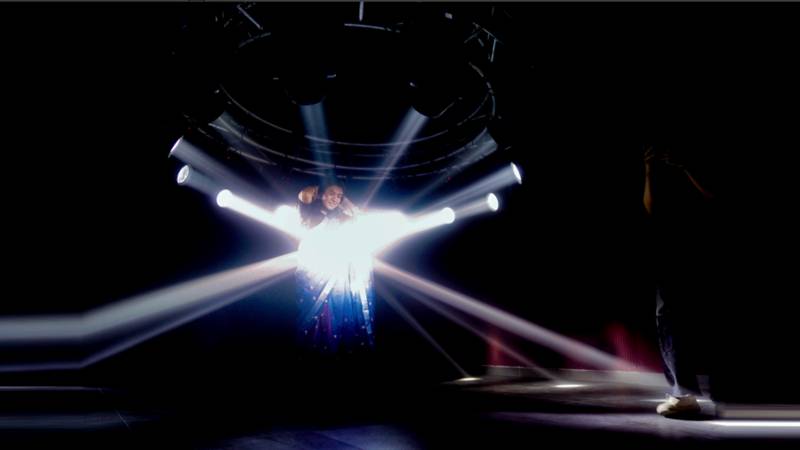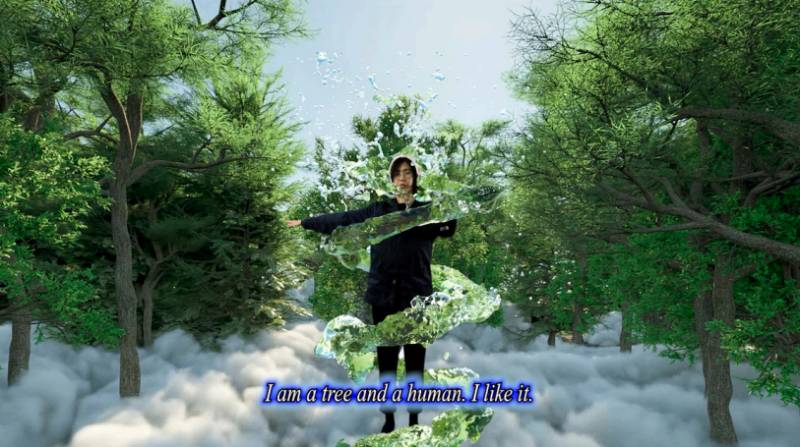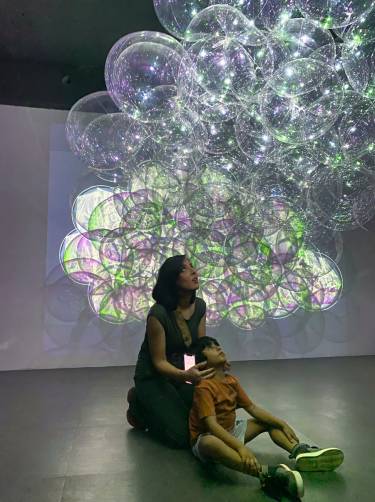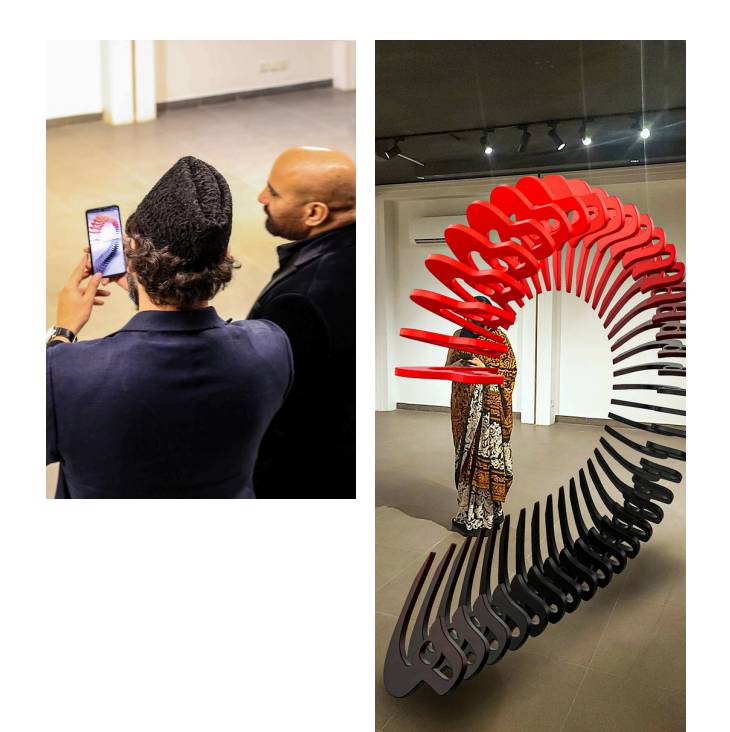
We all know what it feels like to be out in the open air. Yet once we try to pin it down within established categories and conventions of thought, no experience could be more elusive.
What is the open air?
Does it circulate in the sky or the atmosphere? Are these the same or different?
If the atmosphere surrounds our planet, and the sky arches above our heads, then in what shape or form can the earth exist in relation to the sky? And if we are out in the open world of earth and sky, how can we simultaneously be in the air?
How, in other words, can we inhabit the open? If we can do so only by containing it, then how can it still blow?
In what follows, I seek to establish what it means to be ‘in the air’. Instead of thinking of the inhabited world as composed of mutually exclusive hemispheres of sky and earth, separated by the ground, we need to attend, as I shall show, to the fluxes of air and water droplets.
To feel air is not to make external, tactile contact with our surroundings but to mingle with them. In this mingling, as we live and breathe, the wind, light, and moisture of the sky bind with the substances of the earth in the continual forging of a way through the tangle of life-lines that comprise the land.
For in relation to the sky, the earth can exist only as a ground of habitation. Yet as I go on to show, a ground populated solely by people and objects, and a sky that is empty but for birds and clouds, can exist only within a simulacrum of the world, modelled in an interior space.

In the world, beings relate not as closed, objective forms but by virtue of their common immersion in the fluxes of the medium. The process of respiration, by which air is taken in by organisms from the medium and in turn surrendered to it, is fundamental to all life.
The phrase "between the earth and sky" is often used poetically to refer to various things that exist in the world around us. It can symbolise the vastness and beauty of nature, the mysteries of the universe, or the interconnectedness of all things. In a literal sense, between the earth and sky, you would find the atmosphere, clouds, birds, airplanes, and celestial bodies like the moon and stars. Figuratively, it can represent the realm of human experience, emotions, dreams, and aspirations that exist between the tangible earth beneath our feet and the infinite sky above.
Last month, an exhibition titled “Volume of air trapped between the earth and the sky” opened at Haam Gallery in Lahore, curated by Faizan Naveed, alumnus and currently senior professor at the School of Visual Arts at Beaconhouse National University (BNU). Driven by peculiar details from his immediate surroundings, Faizan’s artistic practice spans an array of experiments ranging from designing spaces to exhibiting "Living Sculptures,” to orchestrating classrooms and collaborating with people from various fields. His zest for risk-taking and collaborations led him to the inception of a composite of multi-ethnic, multifaceted immersive multimedia art, coming together to explore a world beyond rigid distinctions and boundaries, a voyage to discover new frontiers, spaces within spaces, worlds within worlds as explained by Michel Foucault in his concept of Heterotopias, to describe certain cultural, institutional and discursive spaces that are somehow “Other”: disturbing, intense, incompatible, contradictory and/or transforming.
Foucault created the concept of the site to introduce a brand-new spatial kind, the heterotopia. Heterotopia is contextually connected to the more well-known term “Utopia,” which Foucault uses as heterotopia’s theoretical opposite. He says that exterior sites like utopias and heterotopias have the peculiar characteristic of existing in connection with all the other sites, but in such a way as to question, negate, or invert the set of relations that they happen to identify, mirror, or reflect.
Heterotopias are genuine locations that serve as “counter-sites,” symbolising, opposing, and inverting all other traditional sites, in contrast to utopias, which are imaginary, wonderful, and perfect surroundings. The heterotopia portrays a juxtapositional, relational setting with strange places and apparent conflicts.

To illustrate the duality and contradictions, the truth and unreality of utopia and heterotopia, Foucault utilised the metaphor of a mirror. A mirror is a metaphor for heterotopia since it is a real object that affects our connection with our image, but it simultaneously serves as a metaphor for utopia because the image you see in it does not exist. Muzzumil Ruheel’s AR sculptures “HA HA HA” and “NO” precisely embody this dichotomy of the real and the unreal whereby using augmented reality, viewers are invited to enter a (non)fictional world where they can interact with text otherwise not existing in the physical space. This teleportation of the viewers enables them to experience a world beyond the tangible and the viewable.
Faizan Naveed’s curatorial brilliance came through in the perfect blend he had to offer, fusing together established practitioners with the very young
German visual artist Jana Hartman’s research-based practice also focuses on the disparities between humans and the world they inhabit, in the process exploring this complex and uncertain relationship they share. Stemming from a keen interest in the primary elements that govern the systematic functioning of the universe, Jana’s photographic installation namely “Mastering the elements” weaves together landscape photographs, photo-documentation of experiments with primordial matter and excerpts from historical writings, scientific papers, and philosophical viewpoints giving rise to a multifarious dialogue between the artist, the philosophical and the scientific. The mixed narratives aim to leave the viewers bewildered as they try to make sense of the scattered installation, depicting our large appetite and relentless pursuit for conspiracy theories about everything; obviously an outcome of gaps in factual information results in us grappling with the world through concocting, believable and detailed narratives. Jana Hartman’s work is indeed a manifestation of the times we live in, where knowledge is still constructed out of a mix of religious beliefs, scientific facts and superstition.
Another exciting practitioner on view was Switzerland-based South Korean artist Hae Young Ji, whose practice teeters between intersectional identities in the digital age and contemporary anxieties assuming the role of a prognosticator. Her immersive video work for the show called “Circling of life” is a captivating, amusing fictional tale stemming from notions of reincarnation that is the belief in a continually transformative soul. From a factory worker dying from harsh conditions in South Korea in the 1970s to becoming a tree to eventually again morphing into a human again, employed in a company situated above the clouds providing human intelligence rental service and a Free-Time service. The work profoundly fictionalises facts, in the process questioning the horrid past of South Korean labour along with the future of mechanical labour in a digitised world. An underlying connotation in her work is the fact that art is for change, brought about by the artist to change the environment surrounding them.

Faizan Naveed’s curatorial brilliance came through in the perfect blend he had to offer, fusing together established practitioners with the very young. In this regard an exciting prospect of the exhibit was Subista Kayastha, an emerging interdisciplinary practitioner from Nepal who currently resides in Lahore, Pakistan, as part of her UN scholarship at the School of Visual Arts at Beaconhouse National university. Her work revolves around memory as a construct and it’s imprints on the minds of individuals. “Ephemeral Atmosphere” on view was a work exceeding the potential of an undergraduate student as was its focus on the vastness and the boundless potential of the earth and the sky. Initiating philosophic discourse on existentialism, fragility and impermanence of life, the installation comprised of levitating balloons with a moving image of inflating and deflating balloons projection-mapped on to those very balloons, accompanied with a breathing surround sound.
The exhibition took place on the 27th of April 2024 and was cosponsored by Bank Alfalah, Zekdo and Siffar along with the kind patronage of Faraz Ali, Zaheer Khan and Khalid Qureshi.

